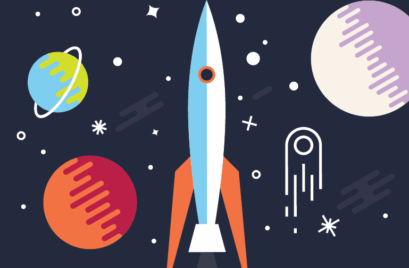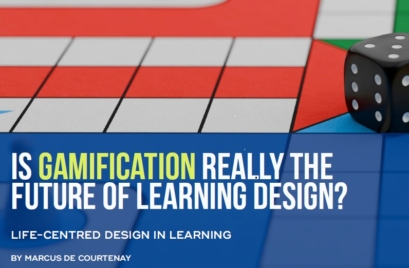
In late 2022, the world was abuzz with the release of Chat-GPT. Chat GPT attracted 1 million users in just 5 days, the fastest rate of adoption for any tech product, ever. The new generative AI systems, like Chat-GPT, represent a significant advancement over previous generations of AI in three key ways:
- They go beyond simply interpreting existing information and making predictions to generating new information in ways that are close, even indistinguishable, from human-created outputs.
- They can understand and respond with natural language, images, audio, and video, which enables a wide range of use cases (vs. the relatively narrower applications of previous AI systems)
- Their approachable interfaces make them easy to learn and interact with, expanding the potential user base.
Impact On Jobs
A 2023 Goldman Sachs report projected that roughly two-thirds of current jobs are in line for some degree of AI automation (and that generative AI could substitute up to one-fourth of current work) – that’s around 300 million jobs worldwide.
Rather than being alarmed by those figures, perhaps it’s time to lean in. And part of this means learning to distinguish between automating and augmenting work. While jobs that need less additional human judgment could be automated entirely, those that require additional human judgment could be augmented and made more productive. So, many roles won’t necessarily disappear, but someone with a machine will likely replace someone without one, in these roles.
Knowing that we can’t put the genie back in the bottle and are much better served learning how to benefit from AI, now is the time for us to actively craft and evolve our roles. But how do we go about doing this?
AI Automates Some Parts of Our Roles While Making Others More Valuable
Previous introductions of technological innovations can help us to understand how we might think about the integration of generative AI. Put simply, technological innovations tend to make some aspects of work significantly cheaper, while making others more valuable, and enable us to do things we couldn’t do before.
Consider the advent of the commercial internet. All of a sudden, it was significantly cheaper to communicate and to search, access, and distribute information. This in turn augmented some aspects of work, while making other parts more valuable. For example, travel agents found that some of their simpler work was being done by consumers themselves, while they combined the new technologies with their expert judgement to focus more on handling more complex trips and business accounts.
Similarly, GPS technology augmented some aspects of work that were once considered the domain of human expertise. London taxi drivers have traditionally had to pass a test that some have considered ‘the most difficult in the world’; entailing memorising the city’s 25,000 streets, including businesses and landmarks. It takes around three years for cabbies of studying maps and driving around the city to build this memory to pass the test. But with GPS maps on smartphones, this memorisation can be outsourced to machines, relegating experienced cabbies’ incredible memories to a neat trick rather than a core part of the job.
These examples don’t mean that jobs need to disappear, but rather that the combination of “tasks” that sit within these jobs (e.g., search, information processing, memorisation) change in how they are delivered. Moreover, technological innovations also open up significant opportunities for things that were previously impossible or impractical. For example, the internet has enabled every business and individual to promote themselves in ways they couldn’t before (today we have no shortage of online “influencers”) and created new markets for attention, while GPS maps have enabled individuals and organisations to become substantially more productive through route optimisation and created new markets for delivery services.
Approaching Job Crafting In The Age of Generative AI
For professionals, asking the following questions can help you begin thinking about crafting your role to unlock the potential of AI and harness your own ‘human’ superpowers:
- What does generative AI enable me to do faster, better, and/or cheaper?
This requires us to step back and unpack our work from the perspective of a computer: breaking down our jobs into more abstract “tasks” that align with the capabilities of digital technologies and AI, such as memorisation, search, transcription, information processing, pattern recognition, prediction, text generation, etc. We can then compare this breakdown directly to what generative AI technologies can do well.
Ideally, those that can be more fully automated by generative AI will be the tedious tasks that we don’t like to do. However, they may also be tasks from which we draw significant meaning (for these areas, see Q3).
An important point in this step is not to get hung up on the current capabilities of AI. It’s easy to dismiss today’s generative AI tools as creating boring or underwhelming text, ugly images, and clunky videos. But when stepping back to view the trajectory of improvement in the quality of AI-generated outputs, it’s clear that these excuses will not hold up for long. While early AI was rudimentary, the recent incarnation of Chat GPT4 passed the Chicago Uniform Bar Exam with flying colours.
- With this in mind, what can I now do more of? And is there a need for this?
With some parts of our roles automated, we can turn our attention to other parts. For instance, ChatGPT and other large language models are especially good at retrieving, comparing, and summarizing information, which could free skilled workers up to spend more time in framing problems, choosing between alternatives, and coordinating complex projects. Those that employ these technologies well could therefore enjoy vast productivity benefits.
Exactly what this shift looks like will depend on the job. For example, with AI assistants taking care of their administrative tasks, could doctors see more patients and provide better healthcare? Could marketers do more personalised marketing – e.g., more focused ads, etc.? Could lawyers bring legal services to a wider group of customers? And is there a demand for these services?
- What can I now do that I couldn’t do before?
This is where we can get creative in thinking about the kinds of tasks we might recruit AI for, which were previously impractical or too costly. For example, strategic leaders can now scrape public websites for thousands of reviews about their competitors, run these through an AI, and ask it to identify the key factors of competitor offerings that customers most value. Think big about what this kind of computational power can enable you to do now.
- What value can I get from generative AI that others can’t?
In other words, what unique questions does my knowledge and experience empower me to ask to get the most out of my collaborations with generative AI? This is where we harness our expertise to generate unique prompts and ask the questions that others can’t.
For example, professional authors could be far more specific in asking AI to write in certain styles or tones. Experienced graphic designers can get better images, faster, through more detailed prompts.
There is a seemingly limitless flow of new information, studies, and developments emerging in generative AI, with the space changing every week. To accelerate our own understanding and begin feeling the benefits of the AI revolution, we need to start identifying the AI tools that we might want to experiment with. And then, importantly, practice how to converse with AI. We have been conditioned for two decades to ask questions in a particular way in search tools such as Google, and those skills need updating. It’s time to ask: how will I communicate (differently) to AI to obtain the information and answers I want?
Need More Help?
Keen to find out more about how you can leverage generative AI to craft your ideal role for the future? Performance Frontiers work with clients to explore a range of dimensions within this emerging tech shift and what they mean for how we work – and even ‘who’ we are at work. Speak to Chris about how we can support you today.








